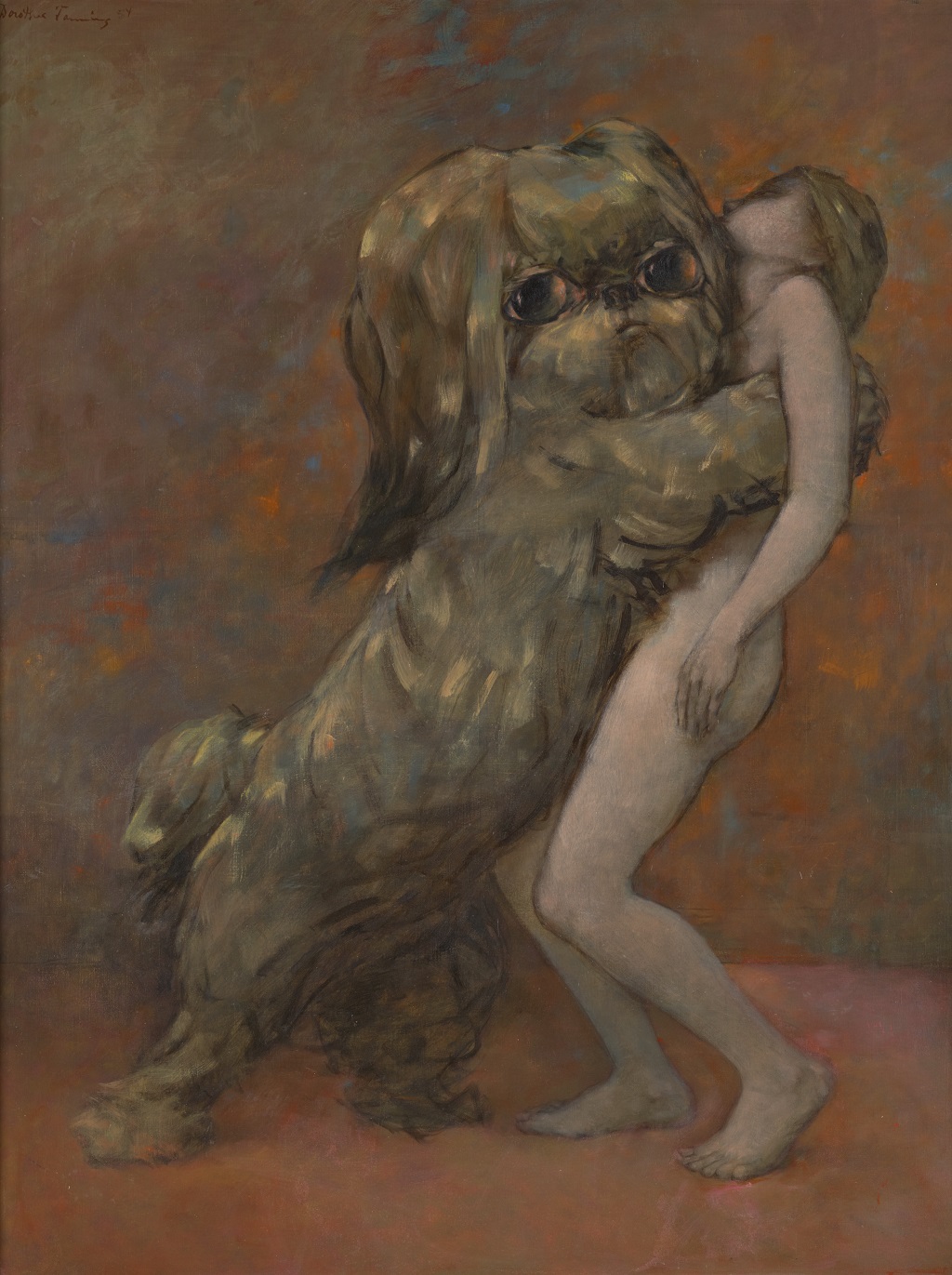
Surrealist work bought by National Galleries of Scotland
Scotland’s national art collection has acquired its first painting by spellbinding surrealist Dorothea Tanning.
This new addition to the collection has been purchased with assistance from the Henry and Sula Walton Fund and Art Fund.
The captivating painting by Tanning (1910-2012), created at a turning-point in her career and kept in her possession for the remainder of her exceptionally long life, has become the first of the artist’s works to enter Scotland’s national art collection, the National Galleries of Scotland are thrilled to announce today.
One of the world’s greatest collections of Surrealist art now welcomes Tableau Vivant, an outstanding painting with a rich and fascinating history.
It has been purchased with help from Art Fund and the Henry and Sula Walton Fund and follows the Galleries’ acquisition of major artworks by Surrealists Leonora Carrington, Salvador Dalí and René Magritte. It will go on immediate display at the Scottish National Gallery of Modern Art (SNGMA).
Tableau Vivant, painted by Tanning nearly 60 years ago, featured in the artist’s first exhibition in France at the Galerie Furstenberg, Dorothea Tanning: Peintures 1949-1954 (7-30 May 1954). Tanning had inscribed the title L’Etreinte on the verso, which can be translated as ‘The Embrace’ or conversely ‘The Grip’ or ‘The Stranglehold’. A few months later it was crossed out and substituted with Tableau Vivant. Under its new title, Tableau Vivant was included in the artist’s first exhibition in Britain, at the Arthur Jeffress gallery, London in 1955.
In the late 1940s and 1950s in Paris, Tanning made her first etchings in the printmaking studio of Georges Visat. Here, she began to introduce the image of the giant dog, Katchina, who belonged to her and her husband, the Surrealist artist Max Ernst (1891-1976).

Tableau vivant (Living Picture) 1954 by Dorothea Tanning
Numerous Surrealist artists took animal avatars which play the role of alter-ego in their work: Ernst took a bird, Leonora Carrington (1917-2011) chose a horse; Tanning took Katchina. Unlike most artists’ avatars, Tanning’s was a specific animal – her own pet. Moreover, Katchina appears in Tanning’s work, not necessarily as an embodiment of the artist; sometimes witness, sometimes protagonist, the dog assumes different roles in different works. These pieces marked Tanning’s shift away from the meticulous, controlled, illustrative technique which was the hallmark of her Surrealist work. Instead, she began to opt for a much looser, softer, more painterly brushwork and her colour switched from bright, intense primaries to ashes and ochres.
An elliptical comment on power, love, the erotic, the humorous, the dream and the nightmare, Tableau Vivant unites key moments in the artist’s life and career. It was a painting that Tanning held very dear and it was included in virtually every major show of her work, notably her solo shows in Brussels in 1967, Paris in 1974, and the Malmö Konsthall and Camden Art Centre in 1993. She kept it for the remainder of her life until 2012, when she died at the age of 101, nearly sixty years after painting it. Towards the end of her life, she specified it as one of a small number of works reserved only for sale to a museum. It was purchased through the Alison Jacques Gallery, London.
Simon Groom, director of Modern and Contemporary Art at the National Galleries of Scotland said: ‘We’ve been looking for a major painting by Dorothea Tanning for many years. This was one of her favourite works: she kept it for more than sixty years, hanging it above her desk in her apartment in New York. It’s a stunning addition to the Galleries’ world-famous collection of Surrealist art.’
Sarah Philp, director of Programme and Policy at Art Fund, said: ‘Tableau Vivant is an astonishing work with a fascinating biography and we are proud to help National Galleries of Scotland purchase this painting for their outstanding Surrealist art collection.’
TAGS

